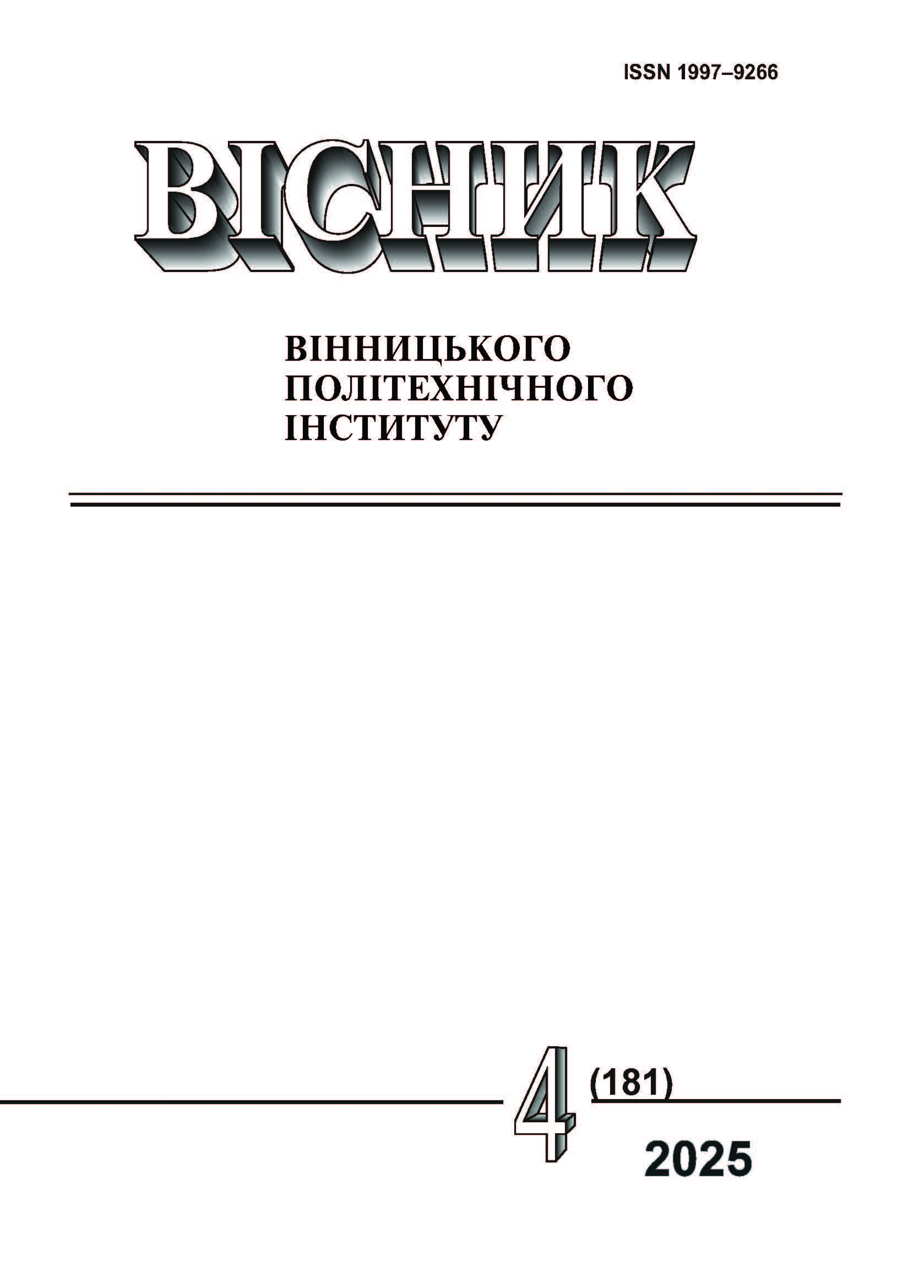СУЧАСНІ ПІДХОДИ ДО ІНТЕЛЕКТУАЛЬНОГО АНАЛІЗУ РИНКУ КРИПТОВАЛЮТ
DOI:
https://doi.org/10.31649/1997-9266-2025-181-4-126-135Ключові слова:
криптовалюта, датасет, машинне навчання, глибоке навчання, нейромережі, системи штучного інтелекту, інтелектуальний аналіз даних, база даних, програмуванняАнотація
Розглянуто проблематику інтелектуального аналізу криптовалютного ринку і, через недосконалість традиційних методів фінансового аналізу, обґрунтовано необхідність впровадження систем штучного інтелекту (СШІ) для обробки великого обсягу гетерогенних даних, підвищення точності прогнозування та ефективності прийняття рішень з огляду на високу волатильність, динамічність та складність ринку криптовалют. Проведений аналіз останніх досліджень моделей штучного інтелекту для прогнозування цін на криптовалютному ринку показав, що існує потреба у створенні гнучких архітектур гібридного типу, які поєднують інтелектуальні підходи з класичними методами. Проаналізовано архітектуру гібридної СШІ, що включає модулі збору, обробки, навчання моделей і візуалізації результатів. Описано особливості роботи з різними типами даних — часовими рядами, ончейн-метриками та текстовою інформацією. У межах емпіричного дослідження здійснено порівняльний аналіз трьох моделей: ARIMA, Random Forest Regressor та LSTM, з використанням відкритого набору історичних цін Біткоїну. У статті також особливу увагу приділено інженерії ознак, зокрема введено додаткові параметри, що суттєво підвищило якість навчання. На основі проведеного дослідження розроблено концепцію гібридної багаторівневої СШІ, яка включає модулі збору та нормалізації даних, обчислювальний блок з GPU/TPU для тренування моделей, і візуалізацію результатів через дашборди та API для інтеграції з біржовими системами. Запропонована концептуальна модель СШІ може слугувати основою для практичного впровадження в інвесторських і фінансово-аналітичних платформах та може зацікавити розробників фінансових технологій, трейдерів і дослідників у сфері цифрової економіки, відкриваючи перспективи для створення високоточних інструментів прогнозування та автоматизованих рішень на ринку криптовалют.
Посилання
Ana Todorovska, et al., “Using ML and Explainable AI to understand the interdependency networks between classical economic indicators and crypto-markets,” Physica A: Statistical Mechanics and its Applications, vol. 624, article 128900, August. 2023. https://doi.org/10.1016/j.physa.2023.128900 .
A. Stencel, What is a meme coin? Dogecoin to the moon! , 2023. [Electronic resource]. Available: https://hal.science/hal-04360574v1/document. Accessed: March 17, 2025.
Waichung Chung, et al., “Ascertaining price formation in cryptocurrency markets with machine learning”, The European Journal of Finance, vol. 30, рр. 78-100, 2024. https://doi.org/10.1080/1351847X.2021.1908390 .
В. В. Покиньчереда, і В. М. Бондаренко, «Криптовалюта: економічна сутність та підходи до облікового відображення,» Ефективна економіка, № 9, с. 1-15, 2022. https://doi.org/10.32702/2307-2105.2022.9.11.
Роль штучного інтелекту в криптовалютному ринку. [Електронний ресурс]. Режим доступу: http://www.spilnota.net.ua/ua/article/id-4839/ . Дата звернення: 30.04.2025.
С. Ткаленко та ін., «Аналіз розвитку міжнародного ринку криптовалют: стан, тренди та перспективи,» Фінансово-кредитна діяльність: проблеми теорії та практики, т. 5, № 46, с. 97-108, 2022. https://doi.org/10.55643/fcaptp.5.46.2022.3841 .
K. Muneer, and U. Fatima, “Cryptocurrencies Analytics with Machine Learning and Human-centered Explainable AI: Enhancing Decision-Making in Dynamic Market”, International Journal of Computer Applications, vol. 186, no. 62, pp. 52-67, 2025. https://doi.org/10.5120/ijca2025924418 .
M. Zubair, et al., “An Improved Machine Learning-Driven Framework for Cryptocurrencies Price Prediction with Sentimental Cautioning”, IEEE Access, vol. 12, pp. 51395-51418, 2024. https://doi.org/10.1109/access.2024.3367129 .
Nrusingha Tripathy, et al., “Cryptocurrency Price Prediction: A Comprehensive Analysis of High-dimensional Features with Deep Learning Techniques,” in 2024 International Conference on Intelligent Computing and Sustainable Innovations in Technology (IC-SIT). Conference Proceedings, 2024, pp. 1-6. http://doi.org/10.1109/IC-SIT63503.2024.10862895 .
В. С. Денисенко, «Аналіз торгових стратегій на криптовалютному ринку,» Ефективна економіка, № 5, с. 1-11, 2022. https://doi.org/10.32702/2307-2105-2022.5.83 .
R. Amirzadeh, A. Nazari, and D. Thiruvady, “Applying Artificial Intelligence in Cryptocurrency Markets: a Survey,”Algorithms, vol. 15, no. 11, рр. 1-26, 2022. https://doi.org/10.3390/a15110428 .
J. Fattah et al., “Forecasting of demand using ARIMA model,” International Journal of Engineering Business Management, vol. 10, рр. 1-9, 2018. https://doi.org/10.1177/1847979018808673 .
Y. Chen, and J. Li, “Recurrent Neural Networks algorithms and applications,” in 2nd International Conference on Big Data & Artificial Intelligence & Software Engineering (ICBASE). Conference proceedings, Zhuhai, China, 2021, pp. 38-43. http://doi.org/10.1109/ICBASE53849.2021.00015 .
S. Hochreiter, and J. Schmidhuber, “Long Short-Term Memory,” Neural Computation, vol. 9, no. 8, рр. 1735-1780, 1997. https://doi.org/10.1162/neco.1997.9.8.1735 .
L. Breiman, “Random Forests,” Machine Learning, vol. 45, no. 1, рр. 5-32, 2001. https://doi.org/10.1023/a:1010933404324 .
Xavier Amatriain, “Transformer models: an introduction and catalog,” arXiv (a curated research-sharing platform) 2024 , https://doi.org/10.48550/arXiv.2302.07730 .
О. О. Радовецький, «Інтелектуальний аналіз ринку криптовалют», на VІ Міжнар. наук.-практ. конф. мол. вч., асп. і студ. Сучасні інформаційні технології та системи в управлінні, Київ, 2025, с. 106-108.
What are the settings in the Market Making bot | Cryptohopper Documentation. Cryptohopper Documentation. [Electronic resource]. Available: https://docs.cryptohopper.com/docs/market-making/what-are-the-settings-in-the-market-making-bot. Accessed: 30.04.2025.
##submission.downloads##
-
pdf
Завантажень: 53
Опубліковано
Як цитувати
Номер
Розділ
Ліцензія

Ця робота ліцензується відповідно до Creative Commons Attribution 4.0 International License.
Автори, які публікуються у цьому журналі, згодні з такими умовами:
- Автори зберігають авторське право і надають журналу право першої публікації.
- Автори можуть укладати окремі, додаткові договірні угоди з неексклюзивного поширення опублікованої журналом версії статті (наприклад, розмістити її в інститутському репозиторії або опублікувати її в книзі), з визнанням її первісної публікації в цьому журналі.
- Авторам дозволяється і рекомендується розміщувати їхню роботу в Інтернеті (наприклад, в інституційних сховищах або на їхньому сайті) до і під час процесу подачі, оскільки це сприяє продуктивним обмінам, а також швидшому і ширшому цитуванню опублікованих робіт (див. вплив відкритого доступу).





